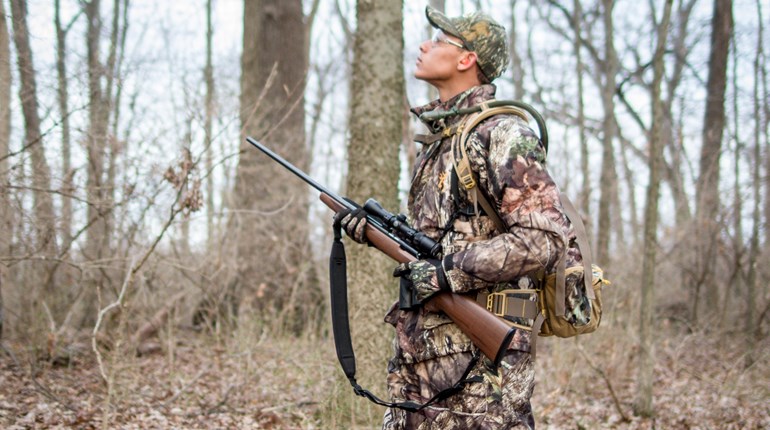The trouble with magazine articles on stand placement is it's easy for us writers to make it seem so cartoon-simple. When does are in estrus all we have to tell you is hang a stand between bedding areas to waylay a cruising buck. Really, just look at the nifty illustration: The buck is "there," the bedding areas with all the does are "there" and "there," so you should sit right "here."
The truth is stand placement is more often as complex as a Dostoyevsky novel. Often you'll have to spend several seasons fine-tuning the placement of a treestand. Even then you can't stop. Predicting the bucks' patterns in the constantly changing phases of the rut, local hunting pressure, weather and more so you can move at the most advantageous times is what good stand placement is all about. To be more specific, here are two stands that were moved and adjusted until they paid off big.
The Swamp-Runner Stand
Beavers had been flooding a woodlot and field for a decade. As years passed, it became as thick as Amazon jungle around the ponds. This was a tough place to hunt. But then a farmer let 20 acres of an orchard grow over along the west side. He'd been leasing the land and decided it wasn't profitable enough. The area is suburban. Deer feed in the orchard and on lawns and gardens, and then bed in the thickets by the beaver ponds. The overgrown orchard became a natural funnel around the ponds from one bedding area to another. After years of hunting the place off and on, it suddenly seemed like a killer setup.
I hung a stand on the edge of the overgrown orchard, but all I saw were small bucks. That changed when I made one last adjustment. A power-line right-of-way offered low-impact access to the other end of the funnel. I moved the stand 200 yards to the other side of the bottleneck. I soon found the two older bucks in the area were cruising to the front of the bottleneck, but then turning to follow the outer edge of the beaver ponds on the east side.
In this way they could catch the does coming from and going to the thickets and perhaps even scent-check the area from the east side without having to waste all the energy it would take to crisscross that very thick terrain looking for does. The older bucks were simply moving smarter, but that wasn't something I could read from the terrain. I soon tagged a 9-pointer from that new stand.
The Saddle Stand
The ridge runs north-south and rises straight up for 500 feet. It then tops off in a bench, falls into a saddle and again rises another 200 feet. It's more than a mile long and all on public land. White and red oaks, and a few dozen other tree species cover the ridge. On top, dense mountain laurel runs and breaks and runs again. Most hunters start low and then give up, as the deer are mostly up in the thick, 10-foot-tall and always green laurel by daybreak.
My first stand on the ridge was at the southern end where deer were dropping off in the evening to feed in fields on a horse farm on private land, but the older bucks wouldn't leave the laurel until dark. My next stand was in the laurel. But I had to sit near the top to get a steady wind and it was impossible to leave without bumping deer. Finally, I moved to where the laurel ends in the saddle on the north end. Now I wouldn't see the deer that stopped to bed in the laurel, but I did start to see the older bucks. There are so many inner folds in the terrain this wasn't clear until I hunted the place after a fresh snow.
My new stand location worked wonderfully for a few years, but then two bowhunters started hunting in the lower bedding area. Now the deer abandon this bedding area before the rut gets thumping, so I took my experience to another set of ridges above the saddle to get back into the action. Those other two hunters now push the deer up to me.
The basic lesson is you need to get in a buck funnel between bedding areas whenthe bucks are cruising for does in estrus, but you still can't let yourself get caught in a rut. Stand hunting is a constantly changing dynamic.





































